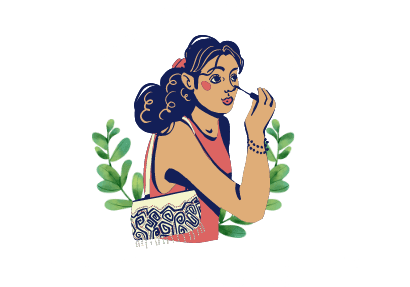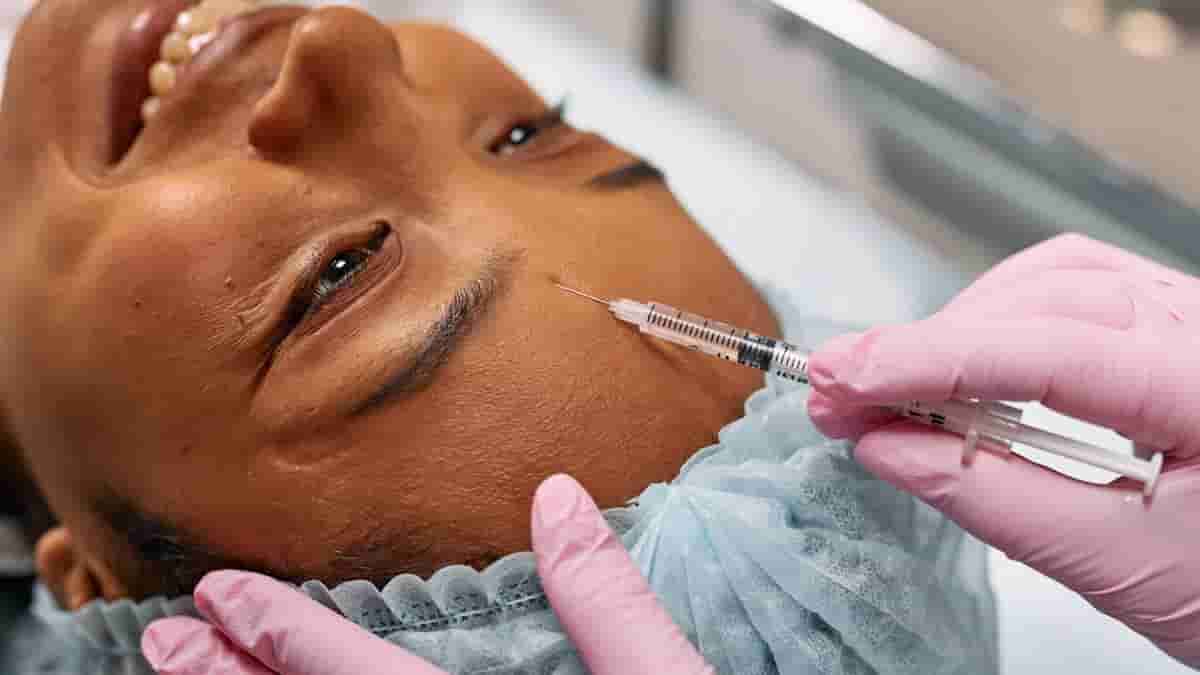Here is your complete guide to prp vs botox.
Introduction to PRP vs Botox
PRP vs botox, what do you need to know exactly? As we age, the visible signs of time can start to take a toll on our appearance. Fine lines, wrinkles, and a loss of skin elasticity can all contribute to a more aged and tired look. Fortunately, there are a number of non-surgical cosmetic treatments available that can help turn back the clock and restore a more youthful, radiant complexion. Two of the most popular options are platelet-rich plasma (PRP) and Botox.
Both PRP vs Botox aim to improve the appearance of the skin and reduce the signs of aging, but they work in very different ways. In this comprehensive guide, we’ll explore the key differences between these two treatments, including how they work, the results they produce, how long the effects last, and the associated costs. By the end, you’ll have a clear understanding of which option may be the better choice for your specific anti-aging goals.
What is PRP?
Platelet-rich plasma (PRP) is a regenerative treatment that utilizes the patient’s own blood to stimulate the body’s natural healing and rejuvenation processes. During a PRP procedure, a small sample of the patient’s blood is drawn and then spun in a centrifuge to separate the platelets and growth factors from the other blood components. This concentrated PRP serum is then injected back into the treatment areas, such as the face, scalp, or joints, to promote collagen production, tissue repair, and cell renewal.
PRP is considered a more natural and holistic approach to anti-aging, as it harnesses the power of the patient’s own biological resources to improve the skin’s appearance and texture. Unlike Botox, which works by temporarily paralyzing muscle movements, PRP stimulates the body’s own regenerative capabilities to achieve a more youthful, radiant complexion.
What is Botox?
Botox, or botulinum toxin, is a neuromodulator that works by temporarily relaxing the facial muscles responsible for the formation of dynamic wrinkles and fine lines. When injected into targeted areas, such as the forehead, around the eyes, or between the brows, Botox blocks the signals from the nerves to the muscles, preventing them from contracting and creating visible wrinkles.
Botox is a popular choice for those seeking a more immediate solution to reducing the appearance of existing wrinkles and preventing the formation of new ones. Unlike PRP, which stimulates the body’s natural rejuvenation processes, Botox provides a more direct and temporary solution to the visible signs of aging.
How PRP vs Botox Work
Mechanism of Action
PRP vs Botox work in fundamentally different ways to achieve their anti-aging effects:
| Treatment | Mechanism of Action |
|---|---|
| PRP | Utilizes the patient’s own platelets and growth factors to stimulate collagen production, tissue repair, and cell renewal. This leads to improved skin texture, tone, and elasticity. |
| Botox | Blocks the signals from the nerves to the facial muscles, preventing them from contracting and creating visible wrinkles. This results in a temporary smoothing of existing wrinkles. |
Procedure of PRP vs Botox
The PRP treatment process involves drawing a small sample of the patient’s blood, which is then spun in a centrifuge to separate the platelets and growth factors. This concentrated PRP serum is then injected back into the treatment areas, such as the face, scalp, or joints.
Botox, on the other hand, is administered through a series of small injections directly into the targeted facial muscles. The procedure is relatively quick, taking only 15-30 minutes to complete.
Results and Longevity of PRP vs Botox
Results
PRP vs Botox both have the ability to improve the appearance of the skin and reduce the signs of aging, but the results they produce can vary:
| Treatment | Results |
|---|---|
| PRP | Improves skin texture, tone, and elasticity; reduces the appearance of fine lines, wrinkles, and acne scars; can also stimulate hair growth. Results may take 2-6 weeks to become fully visible. |
| Botox | Smooths existing dynamic wrinkles and prevents the formation of new ones; results are typically seen within 2-14 days. |
Longevity of PRP vs Botox
The longevity of the results also differs between the two treatments:
| Treatment | Duration of Results |
|---|---|
| PRP | Effects typically last 6-12 months, with some patients experiencing benefits for up to 24 months. |
| Botox | Results generally last 3-4 months, after which time the treatment will need to be repeated to maintain the effects. |
It’s important to note that individual results may vary, and the longevity of the effects can be influenced by factors such as the patient’s age, skin type, and lifestyle.
Cost Comparison of PRP vs Botox
The cost of PRP vs Botox treatments can vary depending on a number of factors, including the provider, geographic location, and the extent of the treatment:
| Treatment | Average Cost |
|---|---|
| PRP | $1,000 – $2,500 per session |
| Botox | $300 – $800 per session |
PRP is generally more expensive than Botox due to the additional steps involved in processing the patient’s blood and the fact that it is a more comprehensive, regenerative treatment. Botox, on the other hand, is a more straightforward procedure that can be performed more quickly and efficiently.
It’s important to note that the cost of these treatments may also be influenced by the number of sessions required to achieve the desired results, as well as any additional procedures or products that may be recommended by the provider.
Is PRP vs Botox the Better Anti-Aging Treatment?
When it comes to reducing the visible signs of aging, both platelet-rich plasma (PRP) and Botox are popular non-surgical cosmetic treatments. However, these two procedures work in very different ways and offer distinct advantages and disadvantages. Determining which option is the better choice ultimately depends on the individual’s specific goals and preferences.
PRP: A More Natural Approach
PRP is a regenerative treatment that utilizes the patient’s own blood to stimulate the body’s natural healing and rejuvenation processes. By injecting a concentrated serum of the patient’s own platelets and growth factors, PRP can improve skin texture, tone, and elasticity, as well as reduce the appearance of fine lines, wrinkles, and acne scars.
Advantages of PRP:
- More natural and holistic approach to anti-aging
- Stimulates the body’s own regenerative processes
- Improves overall skin health and appearance
- Longer-lasting results (6-12 months, sometimes up to 24 months)
Disadvantages of PRP:
- More expensive than Botox
- May require multiple treatment sessions to achieve desired results
- Slightly more invasive procedure (blood draw and injection)
- Potential risk of infection or other complications
Botox: Targeted Wrinkle Reduction
Botox, on the other hand, is a neuromodulator that works by temporarily relaxing the facial muscles responsible for the formation of dynamic wrinkles and fine lines. By blocking the signals from the nerves to the muscles, Botox can effectively smooth out existing wrinkles and prevent the formation of new ones.
Advantages of Botox:
- Faster, more immediate results (visible within 2-14 days)
- Less expensive than PRP
- Straightforward, minimally invasive procedure
- Effectively smooths existing dynamic wrinkles
Disadvantages of Botox:
- Temporary results (last 3-4 months)
- Requires regular maintenance treatments to maintain effects
- Potential for side effects, such as bruising, swelling, or muscle weakness
- Does not address overall skin texture or elasticity
Is PRP or Botox Worth It?
Ultimately, the decision between PRP vs Botox will depend on the individual’s specific anti-aging goals, budget, and personal preferences. PRP may be the better choice for those seeking long-lasting, comprehensive skin rejuvenation, while Botox may be more suitable for those looking for a quick fix to reduce the appearance of dynamic wrinkles.
It’s important to consult with a qualified aesthetic provider who can assess your individual needs and recommend the most appropriate treatment plan. By understanding the key differences between PRP vs Botox, you can make an informed decision and take the first step towards achieving your desired anti-aging results.
Pros and Cons of PRP
Pros:
- More natural and holistic approach to anti-aging
- Stimulates the body’s own regenerative processes
- Improves skin texture, tone, and elasticity
- Can also be used to stimulate hair growth
- Longer-lasting results (6-12 months, sometimes up to 24 months)
Cons:
- More expensive than Botox
- May require multiple treatment sessions to achieve desired results
- Slightly more invasive procedure (blood draw and injection)
- Potential risk of infection or other complications
Pros and Cons of Botox
Pros:
- Faster, more immediate results (visible within 2-14 days)
- Less expensive than PRP
- Straightforward, minimally invasive procedure
- Effectively smooths existing dynamic wrinkles
Cons:
- Temporary results (last 3-4 months)
- Requires regular maintenance treatments to maintain effects
- Potential for side effects, such as bruising, swelling, or muscle weakness
- Does not address overall skin texture or elasticity
Ultimately, the choice between PRP vs Botox will depend on the patient’s specific anti-aging goals, budget, and personal preferences.
FAQs About PRP vs Botox
How long does it take for Botox to work?
Botox typically takes 2-14 days to produce visible results, with the full effects becoming apparent within 2 weeks of the treatment.
Read Also: Botox Bunny Lines Before and After.
Is PRP for hair loss covered by insurance?
In most cases, PRP treatment for hair loss is not covered by insurance, as it is considered a cosmetic procedure. Patients may need to pay for the treatment out-of-pocket.
Read Also: Micro Coring Before and After.
What should I avoid after PRP hair treatment?
After PRP hair treatment, it’s important to avoid washing the hair for the first 24-48 hours, as well as refraining from using harsh shampoos, heat styling, and excessive sun exposure for the first week.
Read Also: Gluta Injection Before and After.
Can I take multivitamins after PRP?
Yes, you can generally take multivitamins after PRP treatments, as they can help support the body’s natural healing and rejuvenation processes. However, it’s always best to consult with your provider for specific recommendations.
Read Also: Russian Lips Before and After.
Conclusion
In the battle of PRP vs Botox, there is no clear-cut winner, as the better anti-aging treatment ultimately depends on the individual’s specific goals and preferences. PRP offers a more natural, holistic approach that can improve overall skin texture, tone, and elasticity, while Botox provides a more immediate solution for smoothing existing wrinkles.
Read Also: Permanent Eyeliner Before and After.
When choosing between these two treatments, it’s important to consider factors such as the desired results, budget, and personal comfort level with the procedures. PRP may be the better choice for those seeking long-lasting, comprehensive skin rejuvenation, while Botox may be more suitable for those looking for a quick fix to reduce the appearance of dynamic wrinkles.
Read Also: Supplements for Booty Growth.
Ultimately, the decision should be made in consultation with a qualified aesthetic provider who can assess your individual needs and recommend the most appropriate treatment plan. By understanding the key differences between PRP vs Botox, you can make an informed decision and take the first step towards achieving your anti-aging goals.
Read Also: Old People with Botox.

